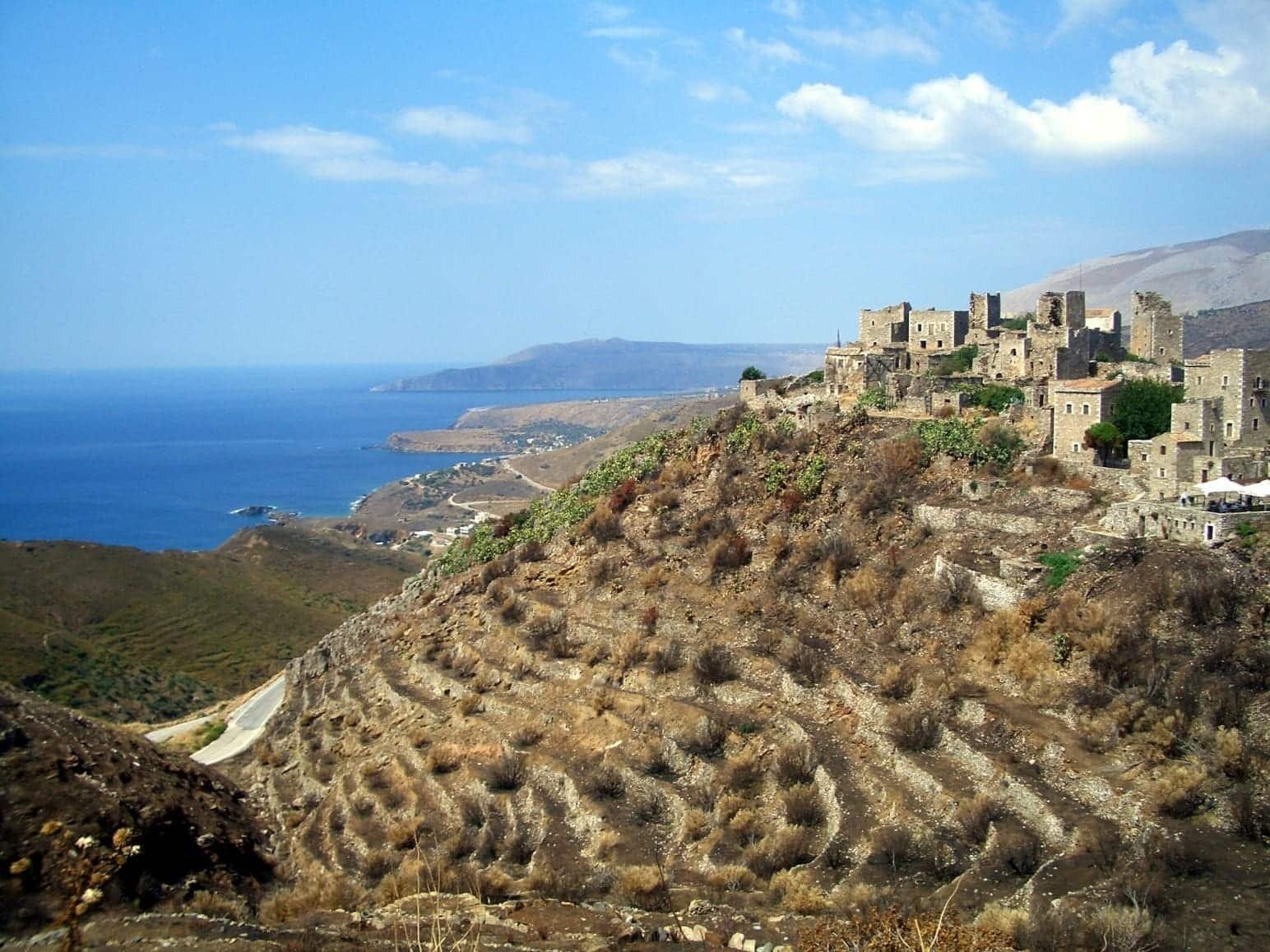If you’re wondering whether Hidden Cave Villages in Greece are real, the answer is yes—they exist, and they’re some of the most magical places you can explore. These villages are tucked inside rocky landscapes, perched on limestone cliffs, or carved into mountain sides. They are not just stories; they are real towns where locals still live, and travelers can step into another world. Hidden Cave Villages in Greece are about mystery, history, and the joy of discovering something that feels secret yet inviting. This post is your guide to experiencing them in a practical way—where to go, what to do, how to get there, and how to make the most out of your trip.

Why Hidden Cave Villages in Greece Should Be on Your List
Hidden Cave Villages in Greece are different from the usual tourist spots like Santorini or Mykonos. These places are quieter, untouched, and full of character. They offer you the chance to see how ancient people built their lives into the stone, and how locals today still protect this lifestyle. You’ll get narrow passageways, carved stone homes, chapels tucked inside caves, and unforgettable food traditions.
Unlike crowded islands, here you can actually sit with a villager, share a plate of olives and cheese, and hear the real stories of the land.
How to Reach Hidden Cave Villages in Greece
Many Hidden Cave Villages in Greece are off the usual tourist track, which makes getting there part of the adventure.
By Car
The best way is to rent a car. Driving through winding mountain roads might seem intense, but the freedom is priceless. You’ll stop when you want, explore villages along the way, and catch breathtaking views.
By Bus
Some villages are connected by local buses, though schedules can be tricky. If you’re budget-conscious, this works, but always check timetables in advance.
By Hiking
If you love adventure, hiking trails lead to some of these villages. You’ll pass olive groves, rocky gorges, and tiny chapels on the way. It’s slow, but it makes arriving even more rewarding.

Best Hidden Cave Villages in Greece to Visit
Vathia, Mani Peninsula
One of the most striking Hidden Cave Villages in Greece, Vathia looks like a fortress made of stone towers. It’s surrounded by hills, overlooking the Aegean Sea. Walking through Vathia feels like stepping into medieval Greece.
Things to do:
- Explore abandoned towers and imagine life centuries ago.
- Visit local tavernas where meat and cheese come fresh from the hills.
- Take a short drive to nearby beaches for a mix of stone and sea.
Matala, Crete
Matala is famous for caves carved into the cliffs above the beach. Once used as Roman tombs, they later became homes for locals and even 1960s hippies. Today, they’re a mix of history and laid-back charm.
Things to do:
- Climb into the caves and see ancient carvings.
- Swim in the crystal waters of Matala Beach.
- Dine at cliffside taverns where seafood tastes like pure ocean.
Olympos, Karpathos
Olympos is remote and dramatic, sitting high on the mountainside. Its stone houses and windmills feel like they belong in another era. Though not fully carved into caves, it’s part of the network of Hidden Cave Villages in Greece because of its carved rock homes and rugged location.
Things to do:
- Wander narrow alleys lined with colorful doors.
- Watch women weaving traditional fabrics.
- Try local pies filled with cheese and herbs.
Kastania, Peloponnese
Kastania is built into the slopes of Mount Parnon. It’s quieter than most, but it’s surrounded by chestnut trees and caves once used as shelters.
Things to do:
- Visit the church carved into rock walls.
- Try roasted chestnuts in autumn.
- Hike the nearby trails to hidden monasteries.
What to Do in Hidden Cave Villages in Greece
Explore Rock-Carved Homes
Many houses in these villages are carved directly into the mountain. Step inside and you’ll see stone walls, wooden ceilings, and cool interiors that protect from the summer heat.
Taste Local Food
The best part about Hidden Cave Villages in Greece is the food. Forget fancy restaurants; here, it’s all about family-style meals. Try slow-cooked lamb, local cheeses, olives, and homemade bread. If you’re lucky, you’ll get a glass of homemade wine or raki.
Stay Overnight
If you can, stay overnight in guesthouses carved from stone. Sleeping inside a cave home is unforgettable—cool, quiet, and unlike anything in modern hotels.
Join Festivals
Some villages host small festivals celebrating saints or harvests. They’re perfect opportunities to see music, dancing, and food traditions alive in these communities.
Budget Tips for Exploring Hidden Cave Villages in Greece
- Travel off-season: Visit in spring or autumn to avoid crowds and high prices.
- Stay local: Guesthouses are cheaper and give you a real experience compared to resorts.
- Eat where locals eat: Skip touristy menus and go for tavernas where villagers gather.
- Public transport: When possible, use buses for long routes and save car rentals for short trips.
Packing Essentials
- Comfortable walking shoes (lots of stone steps and uneven roads).
- Light clothes for daytime, warm jackets for evenings in the mountains.
- A reusable water bottle—villages often have fresh fountains.
- Small cash—many villages don’t take cards.
Why These Places Stay Hidden
Hidden Cave Villages in Greece stay under the radar because they’re harder to reach and don’t get the same marketing as island resorts. That’s what makes them so special. You’re not walking into a postcard-perfect town designed for tourists. You’re stepping into a living story that has survived for centuries.
Sample Itinerary for a Week
Day 1-2: Crete – Matala
Explore the cliff caves, swim in the beach, enjoy sunset dinners.
Day 3-4: Mani Peninsula – Vathia
Discover stone towers, hike around the hills, and relax in quiet taverns.
Day 5: Kastania
Spend the day hiking and exploring cave churches.
Day 6-7: Karpathos – Olympos
Wander the alleys, meet locals, and shop handmade fabrics.
Safety Tips
- Drive carefully on mountain roads—they’re narrow and winding.
- Carry a flashlight if you’re exploring caves.
- Always ask locals before entering private areas.
- Respect traditions, especially around churches and festivals.
The Real Treasure of Hidden Cave Villages in Greece
The true magic of Hidden Cave Villages in Greece is not just the stone houses or the mountain views—it’s the feeling of stepping into a slower world. Life is simple, conversations are real, and traditions feel alive. These villages are proof that you don’t need to chase crowded tourist spots to find beauty.
If you want Greece in its purest form, away from the busy resorts, then Hidden Cave Villages in Greece are waiting for you.
People also ask about: Train Routes in Europe with Better Views Than the Destination.

